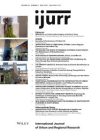A range of econometric studies suggest that neither major sports events nor related new stadium construction typically have any appreciable effect on income or employment at municipal scale. However, one important issue has long been ignored in the literature: architectural quality. At present, international stadium architecture is gaining markedly in significance. New stadia are intended to serve as visiting cards for their hometowns and to accelerate urban (re)development. This article discusses the current transition in international stadium architecture and demonstrates important trends, such as the use of iconic elements, by means of selected examples. We provide an overview of the first evidence for the welfare effects of the built environment as well as of expected stadium‐related social costs and benefits. The article also reviews the first empirical evidence for the impact of a stadium at neighborhood scale. Unconventional stadium architecture is recommended as a means of either supporting area rehabilitation or amplifying the image and spending effects produced by professional sports.
Details
Written by:
GABRIEL AHLFELDT, WOLFGANG MAENNIG
Digital Object Identifier (DOI)
10.1111/j.1468-2427.2010.00908.x
About DOI
Read full article as PDF
Read full article as HTML
See the references for this article
